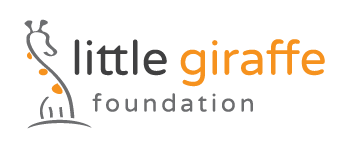
Little Giraffe Foundation
2019 Neonatal Research Grants
After long deliberations, Little Giraffe Foundation voted to fund 20 initiatives for 2019, totaling over $52,000 – 4 Neonatal Research Grants to forward medical care for premature babies and 16 NICU Support Grants designed to improve the lives of the families and babies in the NICU.
2019 Neonatal Research Grants
Boston Children's Hospital, Boston, MA - $10,000 Awarded
Research: L-serine suppresses hypoxia-induced neovascularization in a model of retinopathy of prematurity
Zhongjie Fu, PhD – PI, Assistant Professor, Research Associate, Ophthalmology, Harvard Medical School / Boston Children’s Hospital
Pathologic retinal blood vessel overgrowth (known as neovascularization) occurs in the late stage of retinopathy of prematurity (ROP), a common complication in premature infants and the leading cause of blindness in children. Current treatments, such as laser photocoagulation and anti-VEGF therapy, show efficacy but also present concerns regarding the loss of peripheral retinal function or local and systemic side effects. It is critical to explore new potential therapeutic treatments for ROP.
In premature infants with low gestational age (23-26 weeks), circulating serine levels are much lower than in infants with gestational age of ≥27 weeks. Low circulating serine levels and defects in endogenous serine synthetic pathway are associated with disease progression in a group of patients with subretinal neovascularization. Interestingly, abnormal Müller glial cells, which span the entire retina with direct blood vessel contact, are also observed in these patients. In animal models of ROP, Müller cells increase production of pro-angiogenic factors (i.e., VEGF) to trigger abnormal retinal blood vessel growth. We found that Müller cells highly express L-serine transporter and endogenous L-serine synthetic enzymes in mice. Systemic L-serine treatment decreases retinal neovascularization in the mouse model of proliferative ROP. Our goal is to examine if L-serine controls retinal neovascularization by modulating Müller cell function.
Rush University Medical Center, Chicago IL - $7,500 Awarded
Research: Lactoferrin Dose and the Effect on the Intestinal Microbiome of Preterm Infants
Andrew Berenz, MD – PI, Assistant Professor, Rush University Medical Center
Preterm infants are at increased risk for severe morbidities with long-term consequences, including necrotizing enterocolitis (NEC) and bacterial sepsis. Decreased diversity (dysbiosis) of the intestinal microbiome has been observed preceding the onset of NEC and sepsis. Therefore, it is vital to understand factors that lead to dysbiosis in order to develop strategies to promote a healthy infant gut microbiome. Mother’s own milk (MOM) feedings decrease the risk of these devastating morbidities; however, not all preterm infants are able to receive MOM. Lactoferrin is an abundant bioactive component in MOM that has multiple important functions, including antibacterial activity and immunmodulation. However, lactoferrin concentrations change with duration of lactation and vary significantly between mothers.
It is paramount to determine if lactoferrin is a mediator of the intestinal microbiome in preterm infants, in which case infants receiving low lactoferrin dose may benefit from lactoferrin supplementation. This innovative study will leverage existing biospecimens and detailed clinical data to calculate individualized lactoferrin dose received via MOM and assess intestinal microbiome in a cohort of preterm infants. This will be the first study to evaluate the association between individualized lactoferrin dose and development of the intestinal microbiome in preterm infants during the first month of life.
Children's Mercy Hospital, Kansas City, MO - $10,000 Awarded
Research: Determining the Role of Angiopoietins in Sepsis-Induced Injury of the Developing Lung
Umar Salimi, MD – PI, Pediatric Critical Care Fellow, Children’s Mercy Hospital – Kansas City
Venkatesh Sampath, MDDS – Co PI, Professor of Pediatrics, Children's Mercy Hospital - Kansas City
Bronchopulmonary dysplasia (BPD) is a crippling and chronic lung disease which affects children born prematurely. Bacterial sepsis in neonates causes both acute and chronic lung injury which result in more severe BPD. Endothelial inflammation is a core component of sepsis and acute lung injury (ALI), but therapies targeted toward the endothelium in neonatal sepsis are very limited. Angiopoietins are endothelial cell signaling molecules which have been extensively studied as biomarkers of disease severity in adult sepsis and ALI, but are understudied in neonatal disease. The overall objective of our study is to determine how modulation of the angiopoietin signaling pathway influences the course of acute and chronic lung injury in a neonatal mouse model of sepsis (intraperitoneal lipopolysaccharide)-induced BPD we have developed. We propose inhibition of the pro-inflammatory angiopoietin 2 (ANGPT2) and therapeutic delivery of the anti-inflammatory angiopoietin 1 (ANGPT1) in our mouse model, with subsequent study of both ALI and long-term alveolar remodeling. The results will provide valuable insight into the mechanisms of sepsis-induced lung injury in premature infants that can potentially lead to preventative treatments for BPD.
University of California, San Francisco, CA - $10,000 Awarded
Research: Maternal Telomere Length and Preterm Birth: A "Biological Clock" in Relation to Maternal Chronological Age
Janet Wojcicki, PhD – PI, Associate Professor of Pediatric GI and Nutrition, University of California, San Francisco
The proposed project will assess telomere length at birth in 420 (220 have already been recruited) infants and their mothers recruited at San Francisco General Hospital and UCSF Benioff Children’s Hospital in relation to risk for preterm birth. Telomere length, the protective cap of the chromosome, is particularly sensitive to oxidative stress exposures in pregnancy, including those associated with risk for preterm birth including maternal smoking and gestational diabetes mellitus and maternal hypertension. Additionally, telomere length shortens with each cell division as shorter length is associated with advanced maternal age. Advanced maternal age is a known risk factor for preterm birth across population groups, however, maternal biological aging as measured by telomere length has not been evaluated in relation to risk for preterm birth and known risk factors. Younger maternal age (<20 years) is also associated with preterm birth risk due to biological and reproductive immaturity. Maternal and child telomere length at birth will be evaluated in relation to common exposures in pregnancy known to be associated with increased risk for preterm birth including hypertension, maternal smoking, gestational diabetes mellitus or pre-existing diabetes mellitus, maternal BMI status (underweight or obese) and maternal exposure to stress in pregnancy. These exposures will be evaluated in relation to their differential impact on maternal age in relation to risk for preterm birth (advanced maternal age >34 years and younger maternal age <20 years). By evaluating the impact of known exposures in pregnancy in relation to leukocyte telomere length at birth, this study will help elucidate how advanced and younger maternal age may interact with known risk factors to impact telomere length in children at risk for preterm birth.
